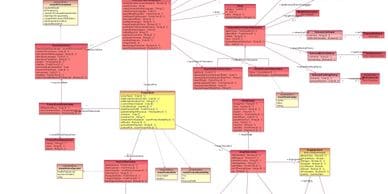HHS ONC FEDERAL HEALTH INFORMATION MODEL FHIM
For over 12 years at the ONC, we led the modeling efforts of the Federal Health Information Model for (FHIM). This federal healthcare it project developed a comprehensive information model with 39 healthcare domains. The model can be seen on our website FHIMS.org. The model also binds standard reference terminologies for accuracy.
The FHIMS program was intended to coordinate the efforts of the partner agencies with the development of Electronic Medical Records, information and terminology standards, including the coordination of agency efforts at relevant Standards Development Organizations (SDOs). A website with an information model, FHIMS.ORG, was created for Healthcare IT professionals for collaborative purposes. The FHIMS is an information model rather than a data model. Data models are meant to be implemented, whereas information models are higher level specifications.

Executive Order 13410
The FHA, together with its federal partners, addresses Executive Order 13410 to achieve secure, interoperable health information exchanges within the federal government and its consortia. FHA serves a coordinating and convening role across the federal agencies to support alignment of health information technology (IT) investments. This has led to the Federal Health Interoperability Modeling (FHIM) Initiative, Federal Health Information Planning and Reporting (FHIPR), and other projects aimed at coordinating across federal agencies. The FHIM is a model of healthcare data developed for the FHA partner agencies. The FHIM project seeks to develop a common Logical Information Model or Computationally Independent Model (CIM).
Usually data models are meant to be implemented, whereas information models are higher level specifications. When an architect for a building draws up blueprints which show where the walls and windows are, where the electrical and plumbing lines go, that is like a data model. The builder uses it to order materials and start work. A programmer uses a data model to design Java or C ++ classes. An information model is more generic. It is abstract in that it defines classes only down to the level just above any one type of computer. However, modeling is really more of a continuum from the most abstract concepts down to the most specific ideas. There are currently no hard and fast rules defined in computer science.
Coordination in Partnerships
The FHIMS program is intended to coordinate the efforts of the partner agencies with respect to information and terminology standards, including the coordination of agency efforts at relevant Standards Development Organizations (SDOs) such as Health Level Seven (HL7), the National Council for Prescription Drug Programs (NCPDP), Integrating the Healthcare Enterprise (IHE), and others. Many of the partner agencies are already active in some of these SDOs, in which case the FHIMS program can help agencies speak with a single voice at the SDOs while also reducing redundant participation.
For those agencies that do not yet have a presence in a particular SDO, this program provides a mechanism for agencies to delegate issues to another agency. For example, if the Department of Veterans Affairs (VA) is active in the Organization for the Advancement of Structured Information Standards (OASIS), and the Indian Health Service (IHS) is not, the FHIMS program provides an opportunity for IHS to learn of relevant OASIS activities, and for IHS to request the VA representatives to OASIS to champion a particular issue.
Another FHIMS initiative was the Federal Health Terminology Model project, which coordinated partner agency efforts to develop healthcare terminology models (i.e., new content), and to enumerate "value sets" that can be associated with the Information Model. The Terminology Model is closely related to the Information Model, as they are each describing the same real-world concepts from two different angles. The Information Modeling team worked very closely with the Terminology Modeling team to identify those concepts which should be enumerated in a value set, to define that value set, and to define the members of the value set.
